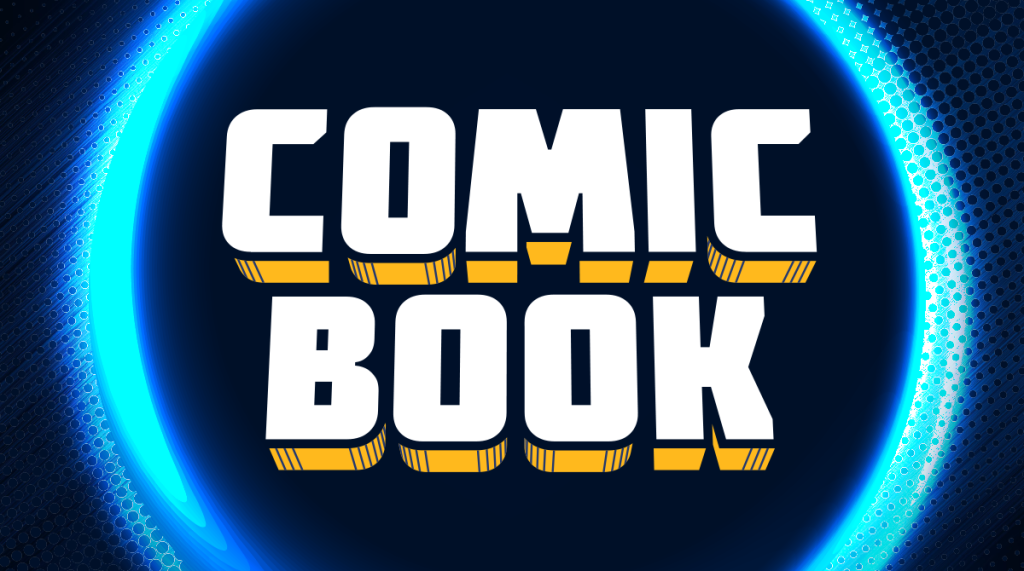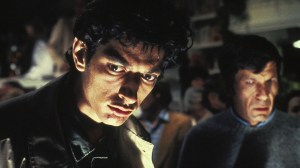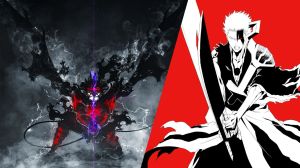As long as there has been Arrow, there have been internet jokes about how much of Batman’s mythology was being pilfered by Arrow — but now that Gotham seems to be tapping many of the same characters who have played a role on The CW‘s flagship superhero drama over the last five years, what does that mean for the future?
Videos by ComicBook.com
Fair warning: in case you couldn’t tell by the story’s title, we’ll be discussing some spoilers from last night’s season 3 finale of Gotham, as well as probably some stuff from Arrow, the finale for which aired a couple of weeks ago. You’ve been warned.
Green Arrow doesn’t have one of comics’ richest troves of rogues, so when Arrow came along and made him the headliner of the first post-Smallville superhero show, producers thought outside the box, in part by leaning on general DC Universe villains who may not have been Green Arrow-specific.
Becuase Oliver is, ultimately, an expertly trained and brutal fighter but not the kind of superhero who leaps tall buildings in a single bound, that often meant relying on street-level villains…and at DC, most street level villains either originate with, or at least do battle with, Batman.
Arrow rarely dipped into the enemies most closely affiliated with the Dark Knight, but in the early going the series was populated with characters like Deadshot (who squared off with Batman in his earliest appearances before becoming part of the Suicide Squad) and the Royal Flush Gang (who get punched by just about everyone in the DCU from time to time.
Early references to the League of Assassins — references that later paid off, with numerous members of that organization turning out to be major players, including Ra’s al Ghul himself — were one of the biggest areas where Arrow has drawn some criticism from fans for being too similar to Batman, and that’s one of the big things that brought this article on: the appearance of Ra’s al Ghul in last night’s Gotham finale was a game-changer not only for Gotham, but potentially for Arrow as well, since Talia and Nyssa, Ra’s al Ghul’s daughters, appear fairly regularly in Arrow, and were two of the lives left up in the air following the events of the, ahem, explosive Arrow finale.
So what could be changing on Arrow thanks to recent changes on Gotham? Read on…
RA’S AL GHUL
The introduction of Ra’s al Ghul on Gotham — a character who battled Oliver Queen in season 3 and ultimately died on Arrow — raises some interesting questions about whether or not his daughters, who are significant figures on Arrow, will be allowed to stick around.
Nyssa, , Ra’s al Ghul’s younger daughter, has been a major player on Arrow since season 2. Talia, the villain’s older and more famous daughter, didn’t appear until season 5, but played a significant role in both the flashback storyline and the modern-day material.
While Ra’s is dead on Arrow, and so the idea of the two telling basically the same story with the character is pretty unlikely, the fact that Ra’s has already told Bruce that he wants him to be Ra’s’s “heir” indicates that the most commonly-used Batman/Ra’s storyline, the idea that Ra’s wants Batman to sire an heir to the Demon’s Head with Talia, is still very much in play for Gotham.
…Which, in turn, could mean that Talia has to be off-limits to Arrow.
This is all a lot of supposition, of course: DC is often intentionally opaque about just how these policies work and when it is or is not okay to have the same character appearing in multiple forms across live-action media. The Flash, The CW’s top-rated show, isn’t going anywhere, for instance, even though Barry Allen will be appearing in Justice League this fall.

SOLOMON GRUNDY
While a lot of characters took big leaps forward in the Gotham finale, most of those were expected. Possibly the biggest surprise of the episode was in the hospital, where a catatonic Butch Gilzean, being treated for a gunshot wound to the head, was admitted under his birth name: Cyrus Gold.
Given that Butch wasn’t a name familiar to comic book fans, some had long held out hope that he would morph into a DC character rather than be killed off, but Gold, who would become the zombie-like powerhouse of a villain known as Solomon Grundy, wasn’t one of the more popular theories.
If you were paying close attention, and we know most of our readers were, you might remember that Cyrus Gold was the name of a Mirakuru-enhanced member of the Church of Blood in season 2 of Arrow.
In the comics, Gold became an inhuman zombie named “Solomon Grundy” after being murdered, when he was extorted for money due to becoming the father of a baby belonging to a prostitute. He was brought back from the dead with materials from the swamp he was buried in.
In many of his comic book appearances, the English nursery rhyme “Solomon Grundy” is used as a framing device. In Arrow, while searching Cyrus Gold’s apartment, John Diggle found a book, containing a poem on Solomon Grundy. When Diggle asks about Gold after the last fight with Arrow, Oliver simply says “Dead on Saturday, buried on Sunday,” a reference to the poem.
Because of the undead nature of Solomon Grundy in the comics, and the introduction of the Lazarus Pit in season 3 of Arrow, some fans have expected, or hoped, that a more traditional version of Solomon Grundy might appear on the series, but the farther season 2 got from the current day, the less plausible that seemed — and with Gotham seemingly on the road to bringing one to the small screen already, it seems even more unlikely.
If you were hoping for more Cyrus Gold in the Arrowverse, though, check out the prose novel Arrow: Vengeance, which takes place during season 2 and features Slade Wilson and Cyrus Gold, among other characters and concepts from around that time.

CONCLUSION
…So what could the apparent reinvention of Gotham mean for Arrow season 6 and beyond?
We’re guessing not a ton, actually. the Ra’s story and Cyrus Gold’s story were both largely in the rear view mirror. The involvement of those characters in the roles they are playing in Gotham would guarantee that the two shows don’t take place in a shared universe, but that was already widely accepted to be true.
If there’s one Batman story that’s potentially a looming threat to Arrow‘s current roll with the fans, it’s arguably Matt Reeves’s The Batman, which will incorporate Deathstroke — a character who finally came back to Arrow with the season 5 finale and impressed fans so much that pretty much everybody wants to see more of him.
Yes, everybody. Including the actor, and Deathstroke’s creator.
Remember also that Arrow and Gotham have shared villains before; shortly after Arrow used The Dollmaker, Gotham took the character on for a much more significant role. Reality didn’t collapse. Both shows carried on.
It’s also worth noting that while Arrow executive producer Marc Guggenheim has acknowledged the influence of Christopher Nolan’s Batman films on the world of Arrow, the actual “Arrow is a Batman show” meme is largely for the amusement of the internet and not particularly true.
In any case, there are definitely some concepts and characters that could go off the table for Arrow following the Gotham finale, but most of those things were toys that the Arrow writers had already picked up, put back down, and moved on.

MORE GOTHAM
In crime ridden Gotham City, Thomas and Martha Wayne are murdered before young Bruce Wayne’s eyes. Although the idealistic Gotham City Police Dept. detective James Gordon, and his cynical partner, Harvey Bullock, seem to solve the case quickly, things are not so simple. Inspired by Bruce’s traumatized desire for justice, Gordon vows to find it amid Gotham’s corruption. Thus begins Gordon’s lonely quest that would set him against his own comrades and the underworld with their own deadly rivalries and mysteries. In the coming wars, innocence will be lost and compromises will be made as some criminals will fall as casualties while others will rise as supervillains. All the while, young Bruce observes this war with a growing obsession that would one day drive him to seek his own revenge as The Batman.
MORE:
- Gotham: Ra’s Al Ghul Debuts In Season Finale Teaser
- Gotham: David Mazouz Wants Batman To Meet Up With Superman
- Gotham Season 3 Blu-ray, DVD Information Released
- Bruce Wayne Becomes Batman in Season 3 Finale

MORE ARROW
After a violent shipwreck, billionaire playboy Oliver Queen (Stephen Amell) was missing and presumed dead for five years before being discovered alive on a remote island in the North China Sea. He returned home to Star City, bent on righting the wrongs done by his family and fighting injustice. As the Green Arrow, he protects his city with the help of former soldier John Diggle (David Ramsey), computer-science expert Felicity Smoak (Emily Bett Rickards), his vigilante-trained sister Thea Queen (Willa Holland), Deputy Mayor Quentin Lance (Paul Blackthorne), brilliant inventor Curtis Holt (Echo Kellum), and his new recruits, street-savvy Rene Ramirez (Rick Gonzalez) and meta-human Dinah Drake (Juliana Harkavy).
Oliver has finally solidified and strengthened his crime-fighting team only to have it threatened when unexpected enemies from his past return to Star City, forcing Oliver to rethink his relationship with each member of his “family”.
Based on the characters from DC, ARROW is from Bonanza Productions Inc. in association with Berlanti Productions and Warner Bros. Television, with executive producers Greg Berlanti (“The Flash,” “Supergirl”), Marc Guggenheim (“DC’s Legends of Tomorrow,” “Eli Stone”), Wendy Mericle (“Desperate Housewives,” “Eli Stone”), Andrew Kreisberg (“The Flash,” “Eli Stone,” “Warehouse 13”) and Sarah Schechter (“The Flash,” “DC’s Legends of Tomorrow”).
More Arrow news:
The Internet Reacts To Arrow’s Insane Season 5 Finale
Arrow: Did [SPOILER] Really Die?
The Arrow Easter Egg That Sealed One Character’s Fate
Arrow: Who Is Deathstroke’s [SPOILER]?









